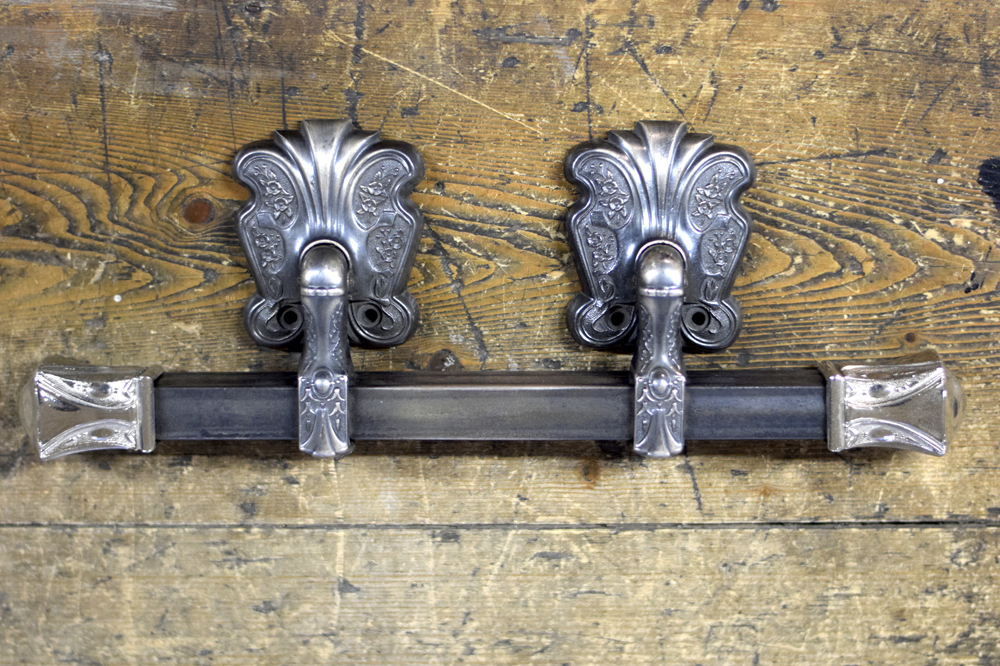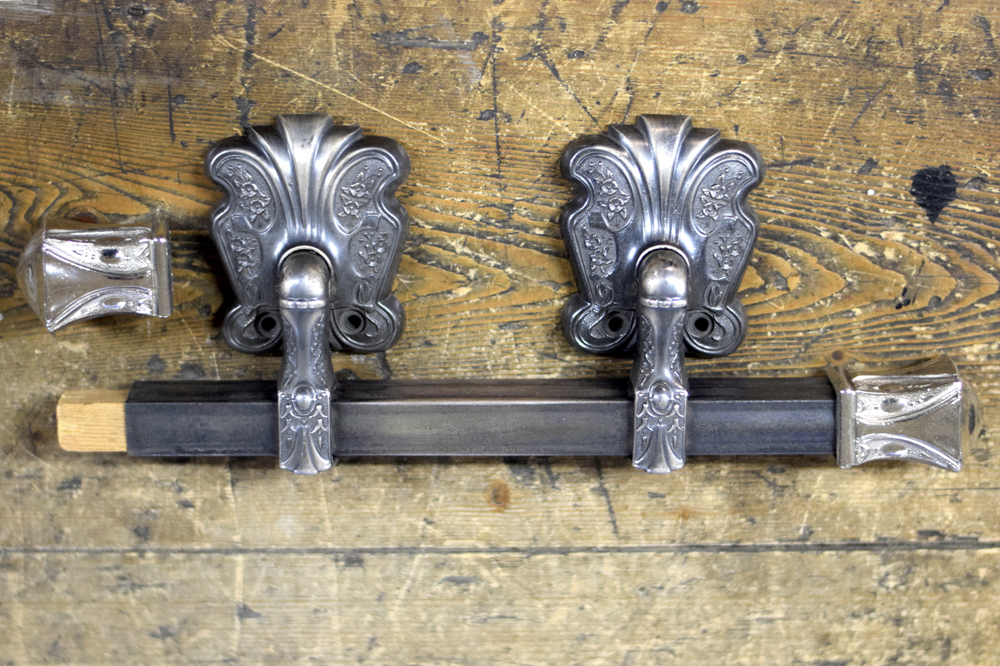

In the Newman Brothers’ 1960s’ catalogue it is advertised as die cast casket and semi-casket furniture.
A casket is a four-sided rectangular box, often with a fancy raised lid, which is hinged. The handles on a casket are two long bars, running along the length of the casket, attached with decorative brackets. In this case casket-bar handles were used. Three, or sometimes four bar handles would be placed on either side of the coffin.
The bar section of the handle was reinforced with wood, which saved on metal, but also ensured that handles were strong enough to allow the casket to be manoeuvred. Sheet metal was then shaped and wrapped around the wooden bar. The ‘rose’ sections of the handle and the ornamental ‘ends’ were die cast, the roses were used to attach the handle to the casket.
Newman Brothers were known for their variety of finishes. This rose ornament has been nickel-plated to achieve the oxi-silver finish we see here.
First the plate is gently heated to allow smooth application of a black lacquer. This lacquered plate is then polished to remove the black lacquer and reveal silvered parts underneath creating this oxi-silver finish as seen here.
The process of producing creating black-lacquer involved dissolving platinum into nitro-hydrochloric acid and then dissolving the crystallised result in spirit of wine, ether, or water. This produces a solution that can be mixed with any of the bronzing powders, such as crocus, sienna or rouge. After applying the lacquer, liquid ammonia could be applied to lighten areas if needed.







